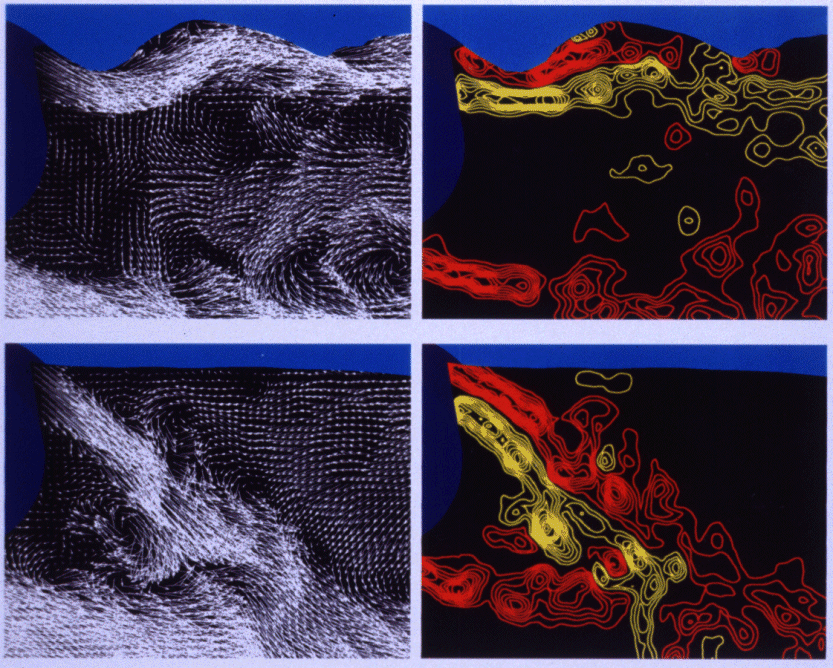You are here
Home ›Flow Past a Cylinder Close to a Free-Surface
Flow past a cylinder close to a free-surface. At a relatively low value of Froude number, Fr= 0.60, represented by the top row of images, a quasi-stationary, free-surface wave forms downstream of the cylinder. Small-scale wavebreaking occurs at the first trough, giving rise to high levels of positive (red) vorticity from the free-surface, which interacts with the negative (yellow) vorticity from the top surface of the cylinder. When the Froude number is increased to Fr = 0.72, as shown in the bottom row of images, separation form the free-surface generates a well-defined layer of positive (red) vorticity. The evolution of this layer is strongly coupled with the negative (yellow) layer form the top surface of the cylinder. This jet-like flow interacts with the layer formed from the bottom surface of the cylinder. The depth of the cylinder is maintained constant at h/D = 0.40. Re = 7,646 and 9,175. [18,19]


